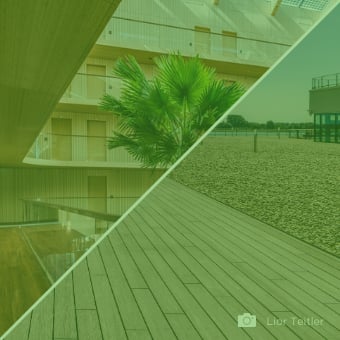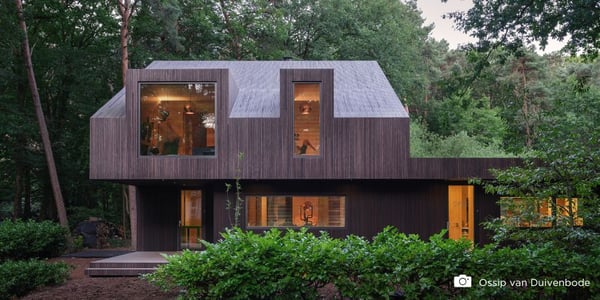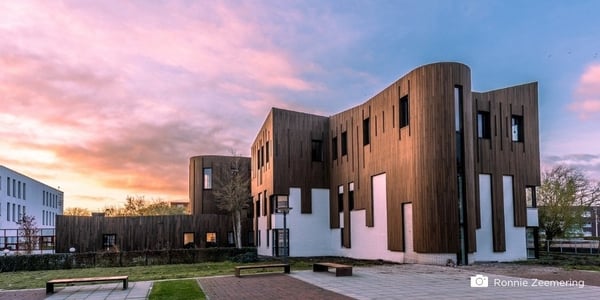Bamboo is a relatively new type of wood. From a botanical point of view, bamboo is a collective name for a group of grass species. According to the latest estimations, there are about 1600 different species of bamboo. Bamboo wood cannot be made from all species of bamboo; only the giant bamboo species are suitable for this process.
.png?width=197&name=2022-01-26%20LITWFB%20(4).png) The widely used Phyllostachus Pubescens, also known as 'Moso bamboo', originally grows mainly in China and reaches a height of up to 20 metres, with a diameter of 10-12 cm. The factories in which MOSO® Bamboo wood is produced are located near the mountains and plantations where Moso bamboo grows.
The widely used Phyllostachus Pubescens, also known as 'Moso bamboo', originally grows mainly in China and reaches a height of up to 20 metres, with a diameter of 10-12 cm. The factories in which MOSO® Bamboo wood is produced are located near the mountains and plantations where Moso bamboo grows.
What kind of wood is bamboo?
Bamboo is neither a hardwood nor a softwood, but a wood made from a grass species known as giant bamboo Moso. The bamboo stem is harvested from the bamboo forest when the bamboo is mature, which means that the cellulose is fully grown and the wood is firm and hard. Bamboo stems are hollow and cannot be sawn into planks like tree trunks. The bamboo stem is sawn and split into strips. After bonding, the bamboo wood is suitable for all kinds of applications, just like other types of wood.
Is bamboo wood sustainable?
Bamboo wood is known as a very sustainable material as the bamboo stems grow quickly in places where other crops have difficulty growing, they also store a lot of CO2 during growth and, after production, have a long life time, similar to wood. Sustainability when looking at bamboo wood means that it is both environmentally friendly and has a long lifespan. This is why bamboo is seen as the ideal building material of the future.
Bamboo wood possibilities
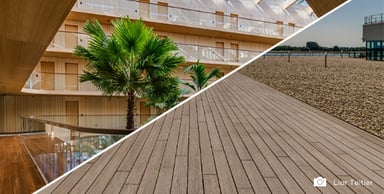
The possibilities with bamboo wood are endless, just like the possibilities with wood from trees. Bamboo wood is produced from bamboo stems. Depending on the production method, the material is engineered to be suitable for all kinds of application, such as:
- Decking
- Cladding in various installation options and dimensions
- Panel and sheet material for all kinds of decorative applications but also for example, as traffic signs or cutting boards
- Flooring for commercial and residential interiors
- Beams for indoor and outdoor use, for example for bamboo furniture, ceilings or façade slats
The differences between bamboo wood and wood from trees
We would like to discuss the main differences between bamboo wood and wood from trees:
- Bamboo is a plant that continues to grow when a bamboo stem is harvested, whereas a tree dies when it is cut down.
- Bamboo wood is only produced from bamboo found in tropical areas, while wood can also be cut from locally planted trees. Bamboo is not (yet) available as European wood.
- Bamboo stems are sawn into strips and then glued into planks or beams, wood from trees can usually be sawn directly from the log.
- Bamboo wood is heavier than most wood species, especially the compressed Density® version.
- Bamboo wood is relatively expensive compared to European softwood and is, therefore, less attractive for mass volumes, such as CLT construction.
- Bamboo wood is favourably priced in comparison to tropical hardwoods.
- Bamboo absorbs a relatively large amount of CO2 per hectare of growing material.
- Bamboo can grow on degraded land, which is less fertile and can hardly be used for other crops or trees.
There are also several similarities between bamboo wood and wood from trees. Bamboo wood can be treated like wood, both for profiling and for finishing. Therefore, the installation and maintenance of bamboo wood is usually similar to that of high quality wood. In addition, wood and bamboo are both bio-based materials that fit perfectly into the modern timber building revolution.
The advantages of bamboo wood
Bamboo has several advantages when compared to wood but even more so when compared to non-renewable materials.
Compared to wood from trees, bamboo wood is:
- More stable: because it is always laminated or compressed, there is less deformation
- More fire resistant: because compressed bamboo wood has a higher density than most wood types, it is more fire resistant. The frequently requested European fire class B for wall cladding and decking can be achieved.
- Faster regrowth: every year, new bamboo stems emerge from the root and within 5 years a new stem grows and matures, that can then be used as wood.
- More consistent quality: because each bamboo product is machine-produced, the quality of the material is consistent and reliable, provided that reliable brands are selected. There are no knots and a- or b-quality.
Besides these advantages, bamboo prevents forest clearance and deforestation. Bamboo does not need to be replanted like trees as the bamboo rhizome continues to grow and produces new stems every year.
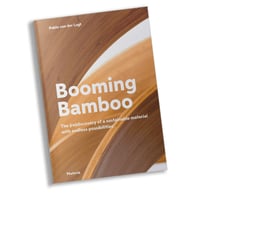 More information about bamboo wood
More information about bamboo wood
Would you like to know more about bamboo? We recommend the book Booming Bamboo. Especially for architects, MOSO® Bamboo still has some copies in stock, please contact your MOSO® Bamboo expert for more information.




.png?width=900&height=450&name=HubSpot%20Blog%20image%20%20(4).png)



